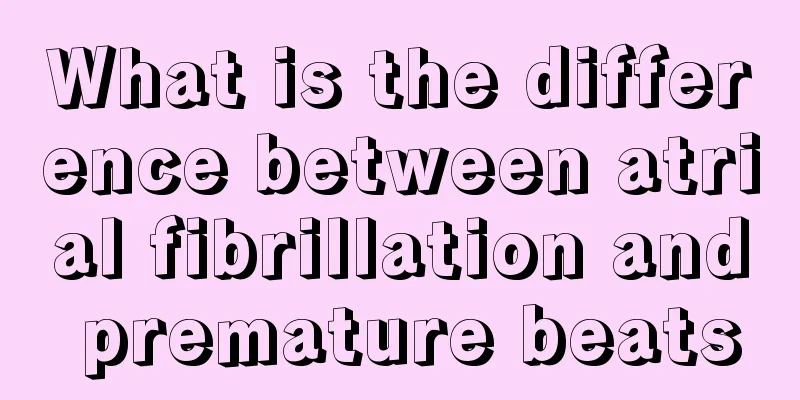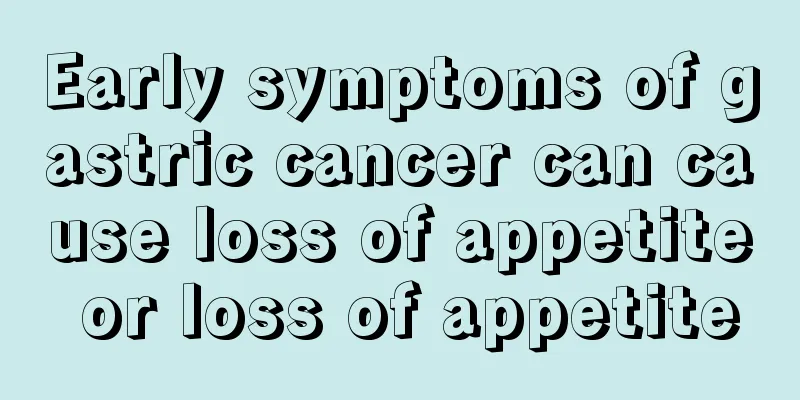What is the difference between atrial fibrillation and premature beats

|
A normal person's heart rate should be maintained at a normal level within one minute to ensure the health of the heart. If a person clearly feels that his heartbeat is abnormal, he should go to the hospital for examination in time. Among them, rapid heartbeat is also called atrial fibrillation and premature beats. Although atrial fibrillation and premature beats both refer to arrhythmia, there are many differences between atrial fibrillation and premature beats that make everyone familiar. Both atrial fibrillation and premature beats are a type of arrhythmia, but premature beats mean that the heart beats prematurely. Sometimes normal people may also experience premature beats, but atrial fibrillation is different. During atrial fibrillation, the heartbeat will be between 300 and 600 beats per minute, and it is completely irregular. People with heart disease, high blood pressure, coronary heart disease and other diseases are more likely to experience atrial fibrillation. Atrial fibrillation, abbreviated as AF, refers to the generation of 350-600 irregular impulses per minute in the atrium. The muscle fibers in various parts of the atrium tremble in an extremely uncoordinated manner, resulting in the loss of effective contraction. The vast majority of cases occur in patients with heart disease such as rheumatic heart disease, coronary heart disease and hypertension. During atrial fibrillation, the ventricular rate is often between 100-160 beats/minute, the rhythm is completely irregular, the heart sounds vary in strength and speed, and the pulse also varies in strength. The pulse number in the same minute is less than the heartbeat number. When the ventricular rate is not too fast, the patient may have no subjective symptoms; when the ventricular rate is too fast, the patient may experience palpitations, dizziness, chest tightness, shortness of breath, etc. Atrial fibrillation reduces cardiac output by 30% and heart failure often occurs. In chronic atrial fibrillation, mural thrombi often form in the atrium, and the detachment of thrombi can cause arterial embolism. Premature beats are abbreviated as premature beats. It refers to the heart beat caused by premature impulses from ectopic pacemakers and is the most common arrhythmia. It may occur in the setting of sinus or ectopic (eg, atrial fibrillation) rhythm. It may occur sporadically or frequently, and may occur irregularly or regularly after every or every few normal beats, forming bigeminy or coupled premature beats. According to the site of origin, it can be divided into four types: sinus, atrial, atrioventricular junction and ventricular. Among them, ventricular premature beats are the most common, followed by atrial premature beats, and nodal premature beats are less common. Premature sinus beats are rare. Premature beats can be seen in normal people or in patients with organic heart disease, and are common in coronary heart disease, rheumatic heart disease, hypertensive heart disease, cardiomyopathy, etc. Premature beats can also be seen in quinidine, procainamide, digitalis or antimony poisoning; hypokalemia; mechanical stimulation of the heart during heart surgery or cardiac catheterization, etc. Premature beats may be asymptomatic or may cause palpitations or a feeling of cardiac arrest. Frequent premature beats can cause symptoms such as fatigue and dizziness (due to reduced cardiac output). For people with existing heart disease, this can induce or aggravate angina pectoris or heart failure. Auscultation may reveal irregular heart rhythm and a long compensatory interval after premature beats. The first heart sound of premature beats is often enhanced, while the second heart sound is often weakened or disappeared. When premature beats are in a binomial or tripeminic rhythm, a long pause can be heard after every two or three heartbeats. Premature beats are inserted between two regular heartbeats and may appear as three consecutive heartbeats. Palpation of the pulse may reveal intermittent absence of pulses. |
<<: Can peony petals be soaked in water to drink?
>>: Tachycardia atrial fibrillation
Recommend
What are the symptoms of people with low self-esteem
Inferiority complex is a relatively common psycho...
One thing you must do before flushing the toilet
Dr. Philip Terno of New York University pointed o...
How to treat HPV68 positive
Many people don't know much about HPV68. They...
Effectively remove eye bags, you will be more confident
The appearance of eye bags makes many female frie...
Can I do a blood test in the afternoon? Pay attention to 7 important matters
Routine blood test is a routine item in physical ...
What are the characteristics of testicular cancer?
What are the characteristics of testicular cancer...
Can I drink snow chrysanthemum if I have low blood pressure?
Snow chrysanthemum has many benefits, the most co...
What to do with mucous gland cyst?
Everyone knows that there is a large amount of sa...
How is lung cancer staged
How is lung cancer staged? The staging of lung ca...
How to treat nasal mucosal erosion
Patients with nasal mucosal erosion should be tre...
Solutions to thick white tongue coating, bad breath and bitter taste
Generally speaking, the appearance of white tongu...
Is mold on the wall harmful to the body?
As we all know, if our living environment is too ...
Can sprouted peas be eaten?
Most of the peas we eat are mainly bean grains. T...
What oil is suitable for frying
In our lives, there are many types of cooking oil...
To treat liver cancer, we must first distinguish whether it is in the early or late stages
The treatment of liver cancer varies according to...









